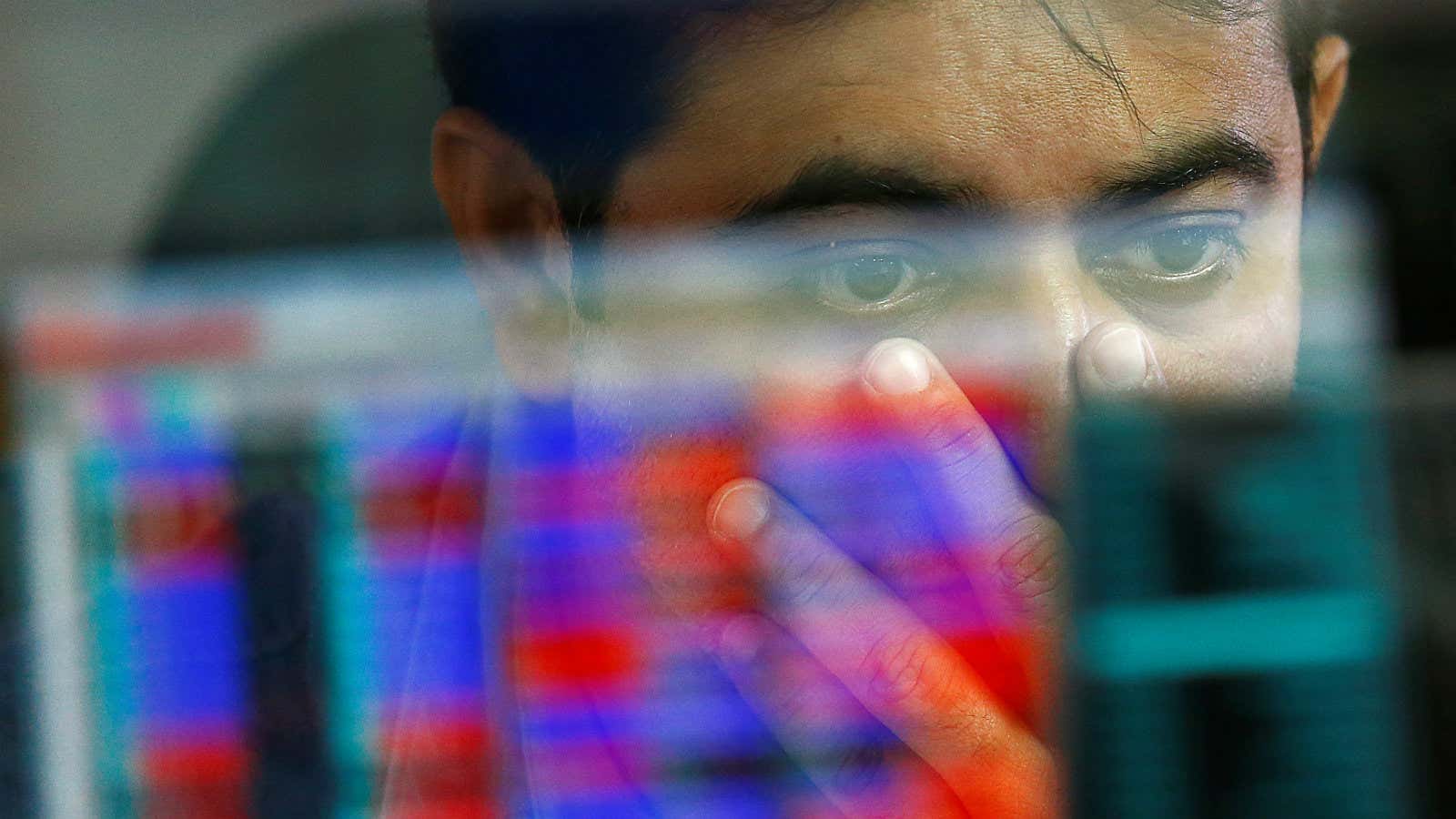After the stock market carnage of the past few sessions, Indian investors would be hoping for a semblance of normalcy, especially since global markets seem to have found the recovery path.
On Tuesday (Feb. 06), Indian markets rebounded, just like Wall Street and other Asian markets. However, the gains in India have been much lower. India’s benchmark index, the Sensex, rose a mere 0.16% in the first half of Wednesday as compared to the MSCI Asia Pacific’s 0.8%.
While Tuesday’s panic was a reflection of global sentiments, particularly in the US, so is Wednesday’s relief rally.
Indian investors will, however, do well to remember that the world’s fastest-growing major economy has a big pile of its own problems that in many ways reflect the global issues that sparked the international markets’ rout in the first place. Together, the global and domestic factors will make it twice as hard for India to overcome its woes.
The global scene
Global commodity prices, particularly crude oil, are bouncing back. American wage growth is improving and that will further fuel prices. Even JPMorgan has warned of a possibly dramatic rise in global food prices. As inflation in America rises, there will be interest rate hikes by the Federal Reserve. This has caused a rout in global bond prices, now mirrored by stocks, too.
India, meanwhile, imports oil for 80% of its needs. So any global spike in prices exposes its fiscal vulnerability, leading to a weakening government bonds, compounding the global problem. As oil remains a key component in most supply chains, consumer prices are likely to spike too.
However, this cascading effect aside, India has its own set of problems, too.
Domestic woes
The Narendra Modi government’s promise to increase minimum support prices for farm products is likely to bolster food prices. On his part, finance minister Arun Jaitley promised to allow the export of agricultural commodities , potentially causing a supply squeeze.
Further, with government salary hikes expected at the state level and election-year excesses likely by political parties, inflation is set to zoom. This, even as the government downplays the risk—”India has seen much higher inflation in the past. Today, we are used to 3-4% inflation,” Jaitley said in a television interview post the budget.
All the above factors may lead to higher interest rates in India, just at the time when corporates are either shy of seeking fresh loans or struggling to repay old ones. An interest rate hike will only scare away private investment, which is key to India’s economic growth and employment generation.
The only thing that can make the Indian markets hot again is an organic improvement in corporate earnings. Indian brokerage firm Motilal Oswal believes it is likely in the second half of financial year 2019. But over the last two years most brokerages—both global and local—have often predicted such a recovery, only to be underwhelmed by the green shoot.
Small investors must remember that two things made 2017 a stand-out year for Indian markets: gushing global liquidity and even stronger domestic flows.
The latter had abated even before the panic sell-off of the last two sessions. The changing global dynamics may draw international capital out of emerging markets like India. The surprise tax on profits from long-term investments in stock markets has further spooked foreign investors.
The euphoria has passed, so will the panic. But when the leash of troubles holding the market back is twice as hard, India will need more money muscle to breakout again.
